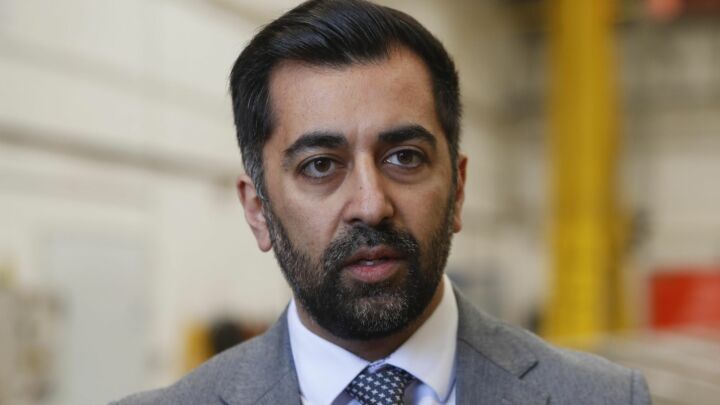Red Ken’s green tyranny
A 50-Year Plan of petty rules: the London mayor's climate change proposals show you can justify anything in the name of 'saving the planet'.

The ‘climate change manifesto’ is one of the few bold political statements on the public landscape today. London mayor Ken Livingstone has now added to the genre with his ‘climate change action plan’, a grandiose piece of political pomposity that future generations will find it hard to beat (1).
The climate change manifesto goes something like this (delete where necessary): a politician/writer/environmentalist decides on a target for how much he/she thinks a particular city/country/continent needs to cut its carbon emissions. Then they consider various options, and put together their favoured portfolio for how this figure can be reached. Once published, their report is all but chiselled in tablets of holy rock. They have done the figures, and the figures add up: now we must all obey.
Livingstone’s target is a 60 per cent reduction in emissions by 2025. Around half of this will be achieved by telling Londoners how to live, and around half by telling UK and European governments which laws to pass.
There will be a ‘major marketing campaign’ to inform Londoners of the changes they can make to cut their emissions, from turning off appliances to installing renewable energy sources in their homes. A pilot Green Homes ‘concierge service’ will carry out energy audits of people’s homes, and help them manage the transition to greener ways of living.
Livingstone sees no barriers to his effort to get Londoners to reduce their collective carbon footprint. He tells us which method of transport to use, steering us away from the private motor car and plane, by ‘promoting alternatives to the car’ and ‘educating Londoners and advocating alternatives to air travel’.
He tells us which model of car to drive: ‘a gas-guzzling 4×4 vehicle’ should be ‘no more sociably acceptable’ than to ‘dump rubbish in the street’, and so these drivers will pay £25 congestion charge, while low pollution cars drive free. He even tells us how to drive: ‘The mayor will promote ecodriving (for example, smoother acceleration/braking and proper vehicle maintenance) by all car, freight, taxi and public transport drivers.’
Pity the poor employees at the mayor’s own Greater London Authority, who will get an extra programme ‘promoting staff energy-savings behaviour at home and at work by running ongoing staff campaigns’.
In order for Livingstone’s target to be met, he also requires ‘a small number of key national regulatory and policy changes’ from UK and EU governments. He elaborates: ‘Action will be necessary at a national and European level to save the further 13.4million tonnes needed each year to constrain London’s total carbon dioxide emissions to 600million tonnes between now and 2025.’
Government must apparently introduce a ‘comprehensive system of carbon pricing’, and bring through ‘regulatory change to incentivise widespread rollout of decentralised energy [solar panels and wind turbines on houses]’. Meanwhile, EU and international authorities have responsibilities, including the ‘earliest possible inclusion of aviation in the EU emissions trading scheme (ETS) and levying duty on aviation fuel’.
In the name of tackling the climate emergency, it seems that anything can be justified. ‘London must…’, we read; ‘it is imperative that we do find ways to meet these targets’; ‘action will be necessary’. The normal mechanisms of politics – proposals, debates, arguments – are apparently suspended. Once an individual can pose as the mouthpiece for the needs of the planet, there is no limit to their authority.
Indeed, that individual’s authority even stretches way into the future: Livingstone’s plan goes 45 years hence. By 2050, he tells us, the majority of London’s energy will be supplied by his favoured decentralised energy systems. By 2050? Livingstone is coming up for re-election in two years.
Now, it may be the case that London should bring through a change in its energy economy. The capital has done so simply and effectively before, with the 1956 Clean Air Act, which set up ‘smokeless’ zones and persuaded Londoners and industry to shift from coal to smokeless forms of energy. Within 10 years, emissions fell by 74 per cent.
But any change in energy use should be the outcome of measured public debate about the different practical options – and one proviso should be minimal disruption to Londoners’ lives and lifestyle choices. By contrast, Livingstone’s plan for tackling climate change is a high-impact plan, with targeted fallout on everything from bus-drivers’ acceleration to EU emissions legislation.
This is what happens when environmental management becomes a political and moral programme rather than a pragmatic response to a particular problem. The aim becomes to have a bigger and more far-reaching impact on people’s lives, to design measures that we notice. After all, if Livingstone’s action plan didn’t affect us that much, it wouldn’t be such a radical political statement, would it?
Livingstone’s report reveals the true colours of the climate change manifesto. We see how the justification of environmental emergency gives a local mayor carte blanche to lord it over not just the capital, but Europe as a whole. Small wonder that one Livingstone aide described climate change as ‘the defining issue’ that lay at the heart of his political programme.
Perhaps we should use that election in two years’ time to show Livingstone that political authority does have its limits after all.
Josie Appleton is convenor of the Manifesto Club.
(1) Action Today to Protect Tomorrow, Mayor of London
To enquire about republishing spiked’s content, a right to reply or to request a correction, please contact the managing editor, Viv Regan.








Comments
Want to join the conversation?
Only spiked supporters and patrons, who donate regularly to us, can comment on our articles.